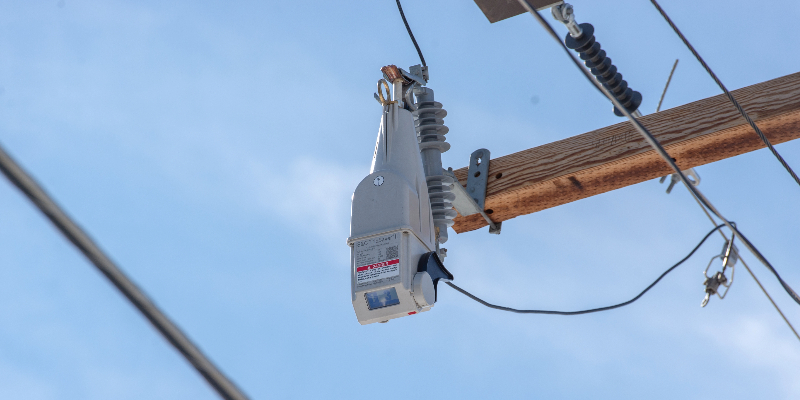5 Economic Models to Build Support for Grid Investments
Back to Top
There is no time to wait to modernize the grid. Greater electrification, more frequent and severe storms, and rising customer expectations are all exerting constant pressure on your system. Deploying modern technology and scaling automation solutions lead to building the future grid we all need.
The TripSaver® II Cutout-Mounted Recloser can produce these transformative results. Because this fault-testing device keeps temporary overhead lateral faults from becoming sustained outages, utilities avoid truck rolls and their associated costs.
Faults happen frequently on lateral lines, and most are temporary. So, the benefits of TripSaver II reclosers are evident immediately after installation. The bigger the deployment of these reclosers, the bigger the reliability and resilience improvement, the greater the bottom line benefit, and the larger the boost in customer satisfaction.
Justify Widescale Deployment to Modernize the Grid
The objective of piloting TripSaver II reclosers aimed to determine how effective they would be in modernizing your grid. The next step to achieving that goal would be a widescale deployment, but that hinges on thoroughly evaluating the pilot’s performance and justifying the reasons to scale.
A strong business case instills confidence in the investment’s long-term value and gains stakeholders’ buy-in. To realize your grid-modernization goals, five financial models can evaluate pilot data and help detail the comprehensive savings:
- Payback: This model determines how fast utilities can recoup their initial investment costs. Because the TripSaver II recloser substantially cuts operations and maintenance costs by reducing truck rolls, utilities typically see a payback within a few years. In comparison, the payback for an automated metering infrastructure rollout can take more than a decade.
- Total Savings for the Customer: Each outage creates a cost for the utility, but it also creates a cost to customers. The Department of Energy’s Interruption Cost Estimates (ICE) calculator shows how much each outage costs residential and commercial customers. Using this approach helps educate regulators and the community on why a widescale TripSaver II recloser deployment is both necessary and cost-effective.
- Total Cost of Ownership: Determining the total cost of ownership considers the upkeep throughout a product’s lifecycle. This ensures utilities are considering additional spending beyond the varying upfront costs. While a lower initial cost might be enticing, the product may require significant upkeep over time. Notably, the TripSaver II recloser has no user-serviceable or replacement parts, unlike alternative technology such as hydraulic reclosers that require regular maintenance.
- Net Present Value (NPV): Calculating NPV accounts for the time value of money. By considering the entire anticipated earnings from the investment and translating those returns into today’s dollars, utilities can understand the initiative’s long-term potential and whether it will be profitable. While the TripSaver II recloser has a higher up-front cost compared to basic technology such as a fuse, its ability to mitigate outages, automatically reset after a temporary fault, and curb truck rolls reaps greater value for years to come.
- Dollar Investment Per Customer Minutes of Interruption (CMI) Saved: When utilities consider reliability, they can also evaluate how much CMI they will save based on the dollars of capital investment. While this ratio varies by utility, often they spend an average of $1 to $2 in capital to achieve one CMI saved. This method helps compare potential investments and persuade stakeholders why capital dollars should be allocated to one project versus another as well as tie the benefits directly back to the customer.
Utility Deploys 30,000 Reclosers, Spends 65 Cents per CMI Saved
A southeastern utility used the dollars-per-CMI-saved approach to modernize its grid. After conducting a TripSaver II recloser pilot, the large investor-owned utility evaluated the performance of its distribution system.
It formulated a cost-benefit analysis for greater expansion to the rest of its customers. The utility multiplied the total number of customers by its SAIDI rating and temporary fault rate.
Based on these inputs, the utility calculated it could save 146.7 million CMI annually. That equated to roughly 65 cents per CMI saved, even after including installation costs. Thorough data collection throughout the pilot and dedication to analyzing results led to a clear business case and success story. Now, the utility is rolling out tens of thousands of TripSaver II reclosers as a core aspect of its multi-billion-dollar grid-modernization plan.
Bold Vision Translates to Broad Benefits
As you strategize for the future, casting a bold modernization vision is critical to keep pace with the rapid changes the grid is experiencing. Transitioning from a pilot to a large-scale deployment can seem intimidating, but multiple financial models can confirm you’re making the right decision and help justify greater investment. The swift results from a TripSaver II recloser pilot and the soundness of the business case ensure your system is equipped with the proven technology you and your customers need.